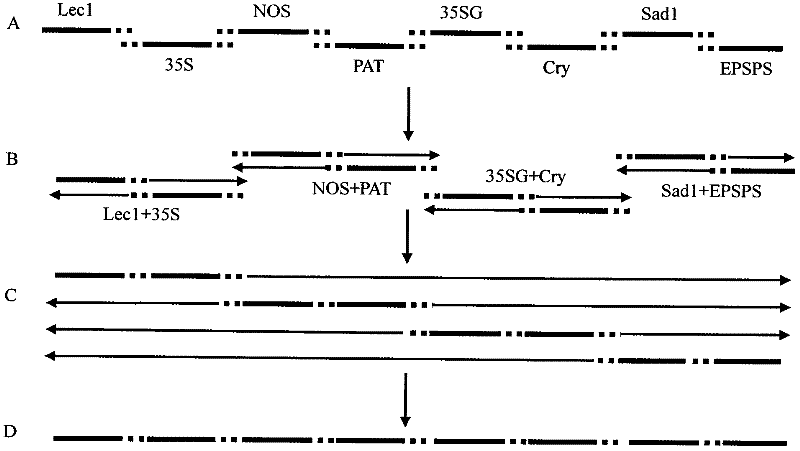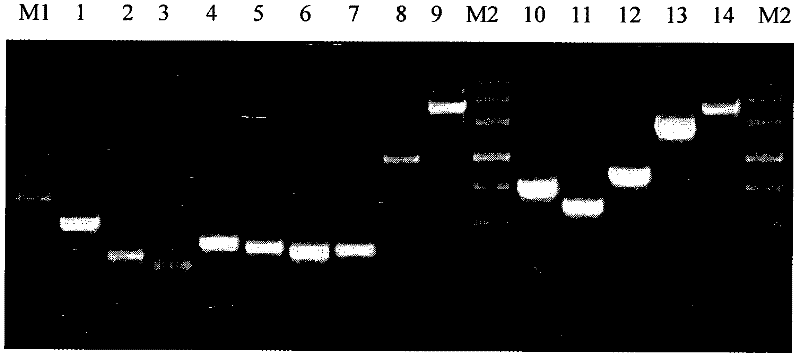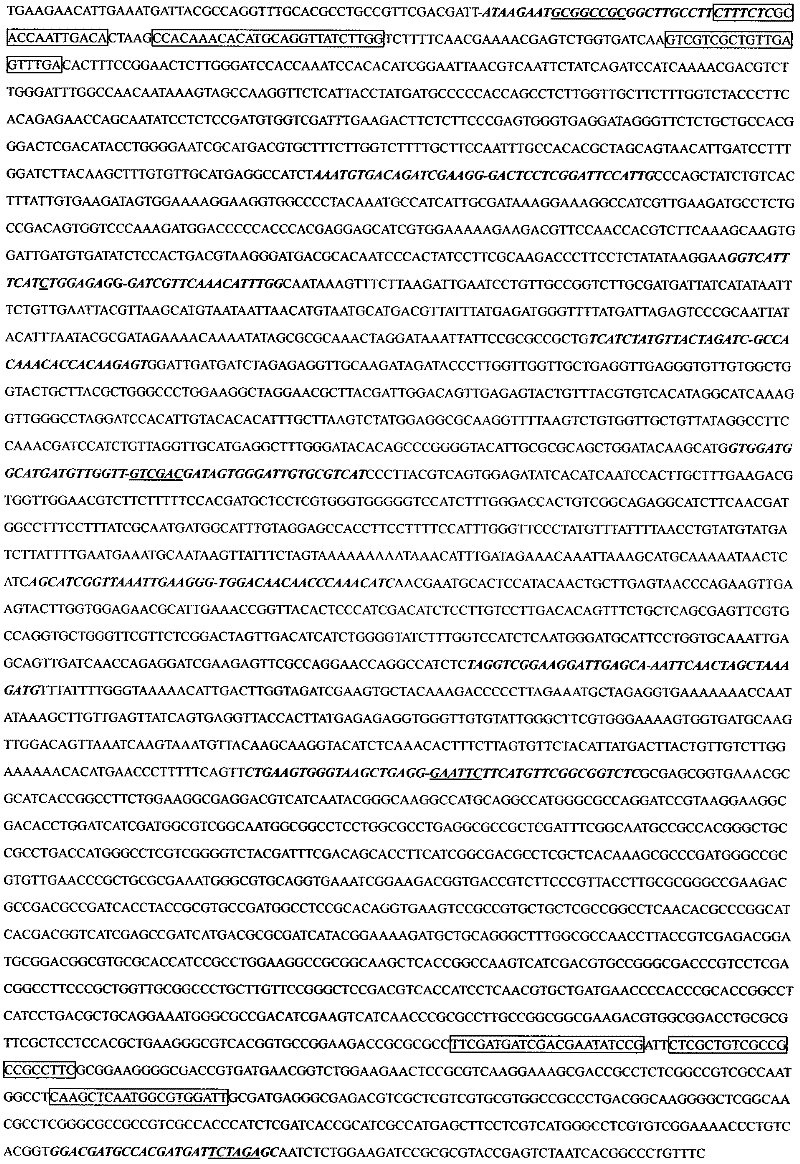Standard plasmid molecule used for detecting genetically modified soybeans and cotton and building method thereof
A technology of transgenic soybean and standard plasmid, applied in the field of molecular biology, can solve the problem of difficulty in obtaining positive standard of transgenic crops, and achieve the effect of high sensitivity and good specificity
- Summary
- Abstract
- Description
- Claims
- Application Information
AI Technical Summary
Problems solved by technology
Method used
Image
Examples
Embodiment 1
[0040] Embodiment 1: Construction of standard plasmid molecules
[0041] 1. Experimental materials
[0042] Transgenic soybean lines GTS40-3-2 and A2704-12; non-transgenic soybean varieties; transgenic Bt cotton series.
[0043] 2. Experimental reagents
[0044] PPML TM 19-T Simple Vector was purchased from Dalian Bao Biological Engineering Company; dNTPs, Taq DNA polymerase, DNA marker Ⅰ, Ⅱ and marker Ⅲ were purchased from Beijing Quanshijin Biotechnology Co., Ltd.; restriction enzymes Not Ⅰ, Sal Ⅰ, EcoR Ⅰ and Xba Ⅰ were purchased from NEB Beijing Co., Ltd.; plasmid genomic DNA was extracted and purified using a plasmid mini-extraction kit developed by Beijing Tiangen Biochemical Technology Co., Ltd.;
[0045] 3. Experimental equipment
[0046] TC-512 PCR amplification instrument (TECHNE, UK); Geliance 200 DNA electrophoresis gel imager (PerkinElmer, USA); other biochemical reagents were imported or domestically produced analytically pure. Nano-Drop ND-1000 nucleic acid...
Embodiment 2
[0097] Example 2: Application of the constructed standard plasmid molecules in actual detection
[0098] 1. Enzymes and Reagents
[0099] Real-time fluorescent quantitative PCR detection kit (Premix Ex Taq TM (Perfect Real Time)) were purchased from Treasure Bioengineering (Dalian) Co., Ltd.; primers and TaqMan probes were synthesized by Treasure Bioengineering (Dalian) Co., Ltd.; other biochemical reagents were imported or domestic analytically pure.
[0100] 2. Experimental equipment
[0101] Real-time fluorescent quantitative PCR instrument 7500 (ABI company).
[0102] 3. Experimental method and process
[0103] 1. Design and synthesis of fluorescent quantitative PCR primers and probes
[0104] According to the sequences of the Lectin 1 and EPSPS genes in the standard plasmid molecules, quantitative PCR primers and probes were designed using the software Primer Premier 5.0, as shown in Table 6. The 5' ends of the TaqMan probes were labeled with reporter fluorescent dye...
PUM
 Login to View More
Login to View More Abstract
Description
Claims
Application Information
 Login to View More
Login to View More - R&D
- Intellectual Property
- Life Sciences
- Materials
- Tech Scout
- Unparalleled Data Quality
- Higher Quality Content
- 60% Fewer Hallucinations
Browse by: Latest US Patents, China's latest patents, Technical Efficacy Thesaurus, Application Domain, Technology Topic, Popular Technical Reports.
© 2025 PatSnap. All rights reserved.Legal|Privacy policy|Modern Slavery Act Transparency Statement|Sitemap|About US| Contact US: help@patsnap.com



